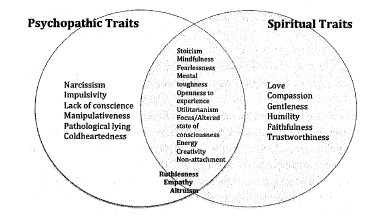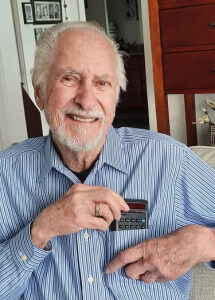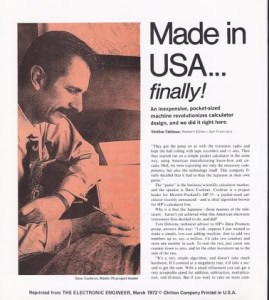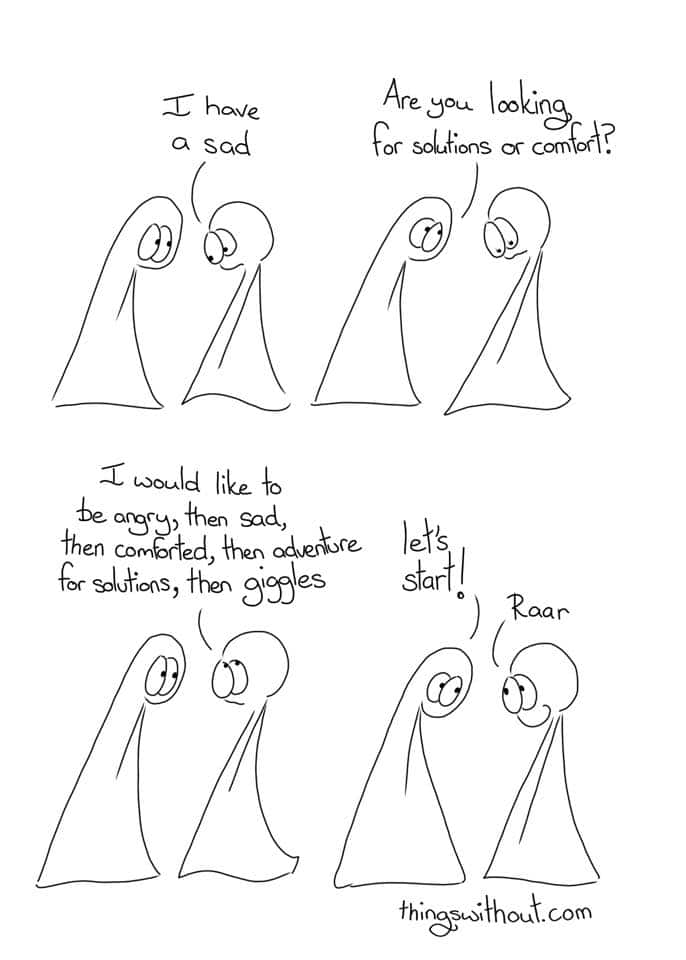This is an informal venue in which Bob will work on items of personal (but not private) info and literary drafts.
6/25 Comments on NYT Climate Discussion
In this piece there is mention of a (fictional) scenario in which India releases sulfate particles into the atmosphere to mimic the cooling effects of volcanic eruptions and counteract deadly heat from climatic warming. The participants in the discussion seem to accept this as a “well, of course they might” sort of thing, but in my mind the use of atmospheric alteration by geoengineering to produce artificial cooling is a desperate last-ditch measure that almost assures unintended consequences of the worst sort. What are the problems?
For starters, it can be done by any country with even a rudimentary space capability — but once done, the effects cannot be limited to the initiating country. Everybody in the same world latitude band as India would feel the effects promptly, with lesser effects gradually diffusing to the north and south. Would the involuntary recipients be grateful? It’s questionable — if they got welcome cooling they would probably get less than the Indians, and if the climate alterations resulted in diminished precipitation somewhere, the recipients of that effect might well consider it an act of aggression.
Can some sort of optimum global strategy be worked out for the whole planet? Our experience with trying to allocate costs and benefits in the process of reducing greenhouse gas emissions doesn’t give much cause for optimism when dealing with an even more immediately deadly condition.
Perhaps the most terrifying possibility is that artificial cooling might be used instead of, rather than in concert with, greenhouse gas reductions. If GHGs are allowed to continue to build up in the atmosphere with only their effect being countered by compensating modifications, then any interruption in the program of compensation will light the fuse to an atmosphere primed for explosive heating. War, earthquake, terrorism, political dissension, accidents — many things could disrupt the manufacturing and transport mechanisms required to keep exactly the right concentrations of aerosols leaking into the atmosphere.
We unknowingly made a huge mistake by heating the planet through atmospheric additions; attempting to knowingly cool it in the same way could be even worse.
7/7 Personal
Frank escaped leashless yesterday, and after a few hours I glanced out of the office window and saw something sort of tan and furry lying on the front porch. It didn’t look quite right, so I scooted back for a better view, and sure enough — dead ground squirrel. With Frank waiting offstage right to claim his trophy and/or toy, which he did as soon as I went out to dispose of it. Fortunately my leg/hip has been improving steadily for the last several days, because otherwise I could never have bushwacked my way into the front garden to get the damn thing away from him.
Sequellae — garbage pickup was that morning, so it’s going to be one ripe little carcass a week from now. Given the temperature forecasts, I hope the little sucker doesn’t blow a hole in the tightly knotted garbage bag. Daphne would have probably frozen it, but I’ve just never gotten that biological. Fortunately, Stacey had put the last vial of flea goop on Frank when she was last here, so I didn’t have to worry about imported ground squirrel cooties. However, it was the last one so after I turned in my overnight blood oxygen recorder (never a dull moment or a good night’s sleep), I headed to the vet. Only to find a rigorous regime of park in the numbered spot and call in and we will come get you. Probably reduces inter-patient conflict, to say nothing of the fact that domestic animals seem vulnerable to COVID. However, it was more than I wanted to deal with to buy a gold-plated box of flea medicine, so I headed down the road to the Grange.
I kind of like the Grange — blue collar, but a bit softer and gentler than Blackbird hardware (that’s the place with the “unload before entering” sign on the door). The only problem is that if you get behind a rancher with a long list (I did), the cashier has to call the loading dock every other item to see if they have three bags of barley, two alfalfa bales, and a partridge in a pear tree. Any way, I finally made it out to my very handy handicapped hang-tag equipped car, and made it home. Where Frank has been squalling at me all day — in, out, in, out, etc. He has finally quieted down, possibly having realized that I am not going to let him out free to go get another one.
Speaking of birds (how did you like that partridge segue?) neighbor Merrill had a couple of tree swallows nesting in the bird house she put up — but came the heatwave and the babies cooked before they fledged. A natural nest would have had ventilation. So much for technology. However, the turkeys are thriving — we could stand a little mortality there –huge herds of them wander around the property. The one good thing about that is that I think they keep the geese away, and goose poop is much nastier than turkey poop.
‘Nuff natural history. How’s Bob? Better — haven’t taken any hard drugs or at least 3 weeks, and am starting to cut back on the gabapentin (for nerve pain) with no ill effects.
Another episode: CAUTION! SINGLE MALE AT LARGE
Started going to walk back and forth in the pool as a way of getting some non-load-bearing exercise, and as a result of the extra washing, rinsing and drying, noticed how dry and scaly my arms and legs are. Aha, I thought, there is some leftover Daphne stuff in the form of a couple of lotiony-looking pump bottles, In one, the contents had set up to the point of unpumpability, but the other (labeled Jason’s Organic Apricot) worked fine, and not only smelled good but seemed to be good for my ugly epidermis. After several days of treatment, I happened to look at the fine print on the label — “…face and hand soap.” Sure enough, it did foam up if I ran water on it, but nonetheless it worked just fine as a lotion. Life is so mysterious.
Last update when? Who knows, or remembers? Pas moi. Quick review (past 3.5 months) — pain in right hip and leg, worsening; visits from Brooke and Stacey (variously accompanied by Chuck and Mitch); hospital visit during which neurosurgeon and orthopod both decide my problem is not in their domain (it does not, however, go away as a result). More visits from Stacey and (separately) Brooke, who cook and run errands and do major household chores, as do Mitch and Chuck. while I loll around taking pain meds and lurching short distances with my walker. Visit to hip doctor who says I could use a new hip but he won’t give me one until I get my diabetes under better control and the spine doctor assures him I don’t need something done there first.
Later, and closer to now — a few weeks into a radically restricted-carbohydrate diet, no longer taking the addictive pain meds (but I do have my very own Narcan spray, just in case), now able to gimp modest distances without the walker. Stacey and Chuck were just here, with Stacey preparing and storing vast numbers of low-carb dishes so I won’t have to rely on my marginal culinary imagination or the all-too-familiar RVM meal delivery menu. Which is very very very much appreciated.
Latest medical news — for the first time in memory I was able to honestly answer “no” to the “Use alcohol?” question on the Dr.’s office form. And no withdrawal. More to the point however, I went to the electrodoctor and had various nerves pulsed and tweaked. He was sort of amazed to find that in spite of polio and neuropathy I was a tabula rasa in terms of electroexploration, so he gave me a pretty shocking diagnosis (joke, sort of). Outcomes — no surprise: lots of nerve deficit in polio leg. Modest surprise — peripheral neuropathy is also in hands/arms (at least it explains the problems with turning pages). Non-surprise I didn’t want — acute and chronic bilateral polyradiculopathy consistent with spinal stenosis. Translation — the spine guy goes first. I see him August 9. At least by then the blood glucose and A1C should be too low to give anybody an excuse for inaction.
So, medical scheduling being what it is, I figure I will be either pre-op or post-op for the rest of the year. In other words, adapt to it as a life-style. I’ve invited my Buddhist friend over for a serious conversation about meditation.
Well, what might I have that’s less depressing and/or boring? Weather? HOT, dry, extreme fire danger (and in places, extreme fires), local irrigation district cut off water releases today — sorry folks, no crops this year. Depressing, but not boring — the fire services are flying a BIG new air tanker out of Medford airport, and it approaches right over the cottage. Chuck loves watching it, and I have to admit it’s impressive; bigger than any of the passenger jets that come in, with bright red-orange stripes around the body and a bulbous belly.
Also on the fire side, the RVM administration (with the concurrence of the Fire Marshall) has decided that the high-rise buildings are sufficiently fireproof so that we can shelter in place while the rest of the region evacuates. Except, of course, those of us living in the non-fireproof wooden cottages. We await official instructions on how all this is to be accomplished.
COVID precautions are more or less off, except at medical facilities and a few other places, so life has sort of resumed, but my disability (I got a hangtag for the car, yay!) takes a lot of the luster out of going out on the town. That, and not drinking, or eating carbohydrates. A modest bright spot, however, is that the hospitality station has been restored to the manor lobby. So I can relax with a cup of coffee when I go up for my pool-walking. Also wonderful — the hot tub is repaired.
7/18 Review of The Wisdom of Psychopaths: What Saints, Spies, and Serial Killers can Teach us about Success. Kevin Dutton (Scientific American/Farrar, Straus and Giroux, 2012)
Reviewed by Bob Buddemeier
“Wisdom” is a bit misleading, implying as it does some integration of knowledge and understanding, whereas psychopaths are defined largely in terms of hard-wired negatives (lack of empathy, remorse, responsibility). The thesis of the book, however, is that under some circumstances aspects of the hard-wired system can produce outcomes superior to those resulting from the actions — and especially the mental decision-making — of “normal” people.
This is hard to discuss with available terminology. “Psychopath” has become generally identified with the more explicit “criminal psychopath” to the point where it is difficult to communicate about benefits or good qualities associated with psychopathy. Fallon (The Psychopath Inside) uses the term “pro-social psychopath,” but that still leaves much to be desired.
It’s both a strength and a weakness of Dutton’s book that he comes close to bridging the terminology gap — but doesn’t quite make it. He introduces us to the basic models and conclusions in the first few chapters, with the following sections presenting examples, details, alternatives or explanations. He makes the point that there are a number of characteristics that go into the making of a total psychopath, and that any or even all of these may be present to some degree in non-psychopaths. It’s just when all of the switches are “on,” all of the knobs are full clockwise, and all of the sliders are fully to the right that the dashboard is set for Ted Bundy or John Wayne Gacy. Ultimately, however, he never gets us to the Rosetta Stone that somehow couples the four psychopathic “factors” (his fig. 2.6) with the four Myers-Briggs personality types. It’s probably just as well.
A moderate mixture, with only a few strong characteristics, can be very advantageous. Figure 1 is a conceptualized plot of probability of career success — whether as a criminal or a law-abiding citizen — as a function of relative psychopathy. Psychopaths are unusually sensitive to the vulnerability of potential victims; in law enforcement, an intuition for guilty behavior is a parallel. Con men and violent criminals are bad; if they are on our side, the rather similar spies and Special Forces Commandos are good. The cold-blooded decisiveness of a deadly knife-fighter finds a parallel in the skills of an expert surgeon.
Starting from these rather undeniable parallels, Dutton moves on to a more detailed examination of psychopathy, which does not exactly flow to an integrated conclusion, but which I nonetheless found interesting, informative, and even entertaining. The author writes informally in the first person, with an evident sense of humor and a “just one of the boys” style. A lot of his professional interviews seem to take place in bars, with the occasional crude expression reminding us that this is not an academic treatise.
We learn about the PPI (Psychopathic Personality Inventory) for assessing trends in the general public, the PCL-R (Psychopathy Checklist — Revised) for forensic application in prisons and hospitals, and the B-scan (for assessing psychopathy in a business context). Even more interesting are the tests, games and experiments designed to develop and apply these various measurement tools — and some of the results. In a situation where there is a choice between sacrificing a few people or killing a large number, the desirable utilitarian result is much more likely to be achieved by a psychopath than by a normal person — who is too reluctant to kill at all.
In addition to meeting some chilling (or merely disgusting) psychopaths, we get some feeling for those who do research on psychopathy, who try to use an arguably somewhat normal mind/brain to describe and understand one that is nearly outside the bounds of human recognition. Both are fascinating, and the combination especially so.
Toward the end of the book Dutton comes up, in a very understated way, with the explanation for the title: “I label the skill set the Seven Deadly Wins — seven core principles of psychopathy that, apportioned judiciously and applied with due care and attention, can help us get exactly what we want; can help us respond, rather than react, to the challenges of modern-day living; can transform our outlook from victim to victor, but without turning us into a villain:
- Ruthlessness
- Charm
- Focus
- Mental Toughness
- Fearlessness
- Mindfulness
- Action”
The key — real psychopaths may possess all of the principles, but usually cannot avoid villainhood because they lack the ability to apportion judiciously and appl[y] with due care and attention.

Fig 2 (Dutton 7.2) Relationship between psychopathic and spiritual states
Immediately thereafter, we encounter the first item in his subtitle — “Saints.” The example — Saul of Tarsus, the ruthless persecutor of Christians, transformed into the selfless pillar of the Church (see Figure 2). The direction of the transformation casts a softer light on psychopaths than might be expected, but Dutton fails to mention the variety of counter-examples. The founder of The People’s Temple of the Disciples of Christ and one-time social activist, Jim Jones, ended up dispensing cyanide Kool-Aid to his followers (again, see Figure 2).

 What I find incredible about RVM is the number of people who have had fascinating careers. Dave Cochran is one of them. David Packard introduced him to a navy admiral as the man who invented the HP-35- the pocket calculator that changed the world. One year after its invention in 1972, slide-rules were a thing of the past. While numerous people worked on it, Dave was HP’s Project Chief for the HP-35. Basically, he was responsible for how it looked and how it worked. For his part in the development of architecture and algorithms of the HP-35, he was included in the bicentennial issue of Time Magazine’s “American Ingenuity”. One of the major components of the HP-35 was its use of Reverse Polish notation (RPN). Instead of putting in 8×2=16, you would you hit 8, Enter, 2, X (you still get 16). Dave said that the reason he used this was due to the greater exactness of the equations under study and less chance of ambiguity. People either loved it or hated it, but it was mostly techies who loved it, so ultimately mass marketing demand led HP back to ordinary algebraic formulations.
What I find incredible about RVM is the number of people who have had fascinating careers. Dave Cochran is one of them. David Packard introduced him to a navy admiral as the man who invented the HP-35- the pocket calculator that changed the world. One year after its invention in 1972, slide-rules were a thing of the past. While numerous people worked on it, Dave was HP’s Project Chief for the HP-35. Basically, he was responsible for how it looked and how it worked. For his part in the development of architecture and algorithms of the HP-35, he was included in the bicentennial issue of Time Magazine’s “American Ingenuity”. One of the major components of the HP-35 was its use of Reverse Polish notation (RPN). Instead of putting in 8×2=16, you would you hit 8, Enter, 2, X (you still get 16). Dave said that the reason he used this was due to the greater exactness of the equations under study and less chance of ambiguity. People either loved it or hated it, but it was mostly techies who loved it, so ultimately mass marketing demand led HP back to ordinary algebraic formulations. Of course, there would be no HP-35 without Bill Hewlett. He wanted a calculator that would fit inside his desk.
Of course, there would be no HP-35 without Bill Hewlett. He wanted a calculator that would fit inside his desk.




